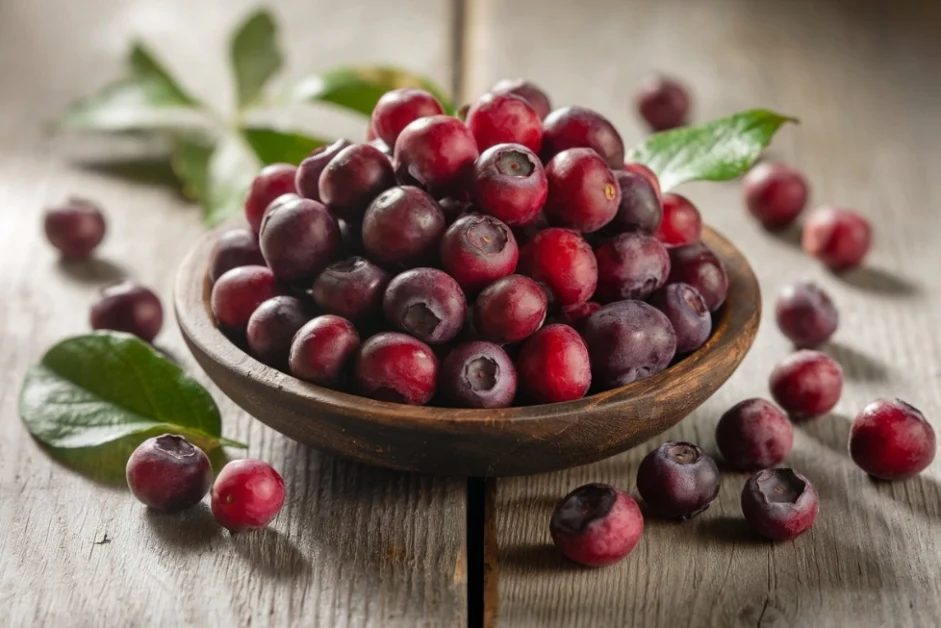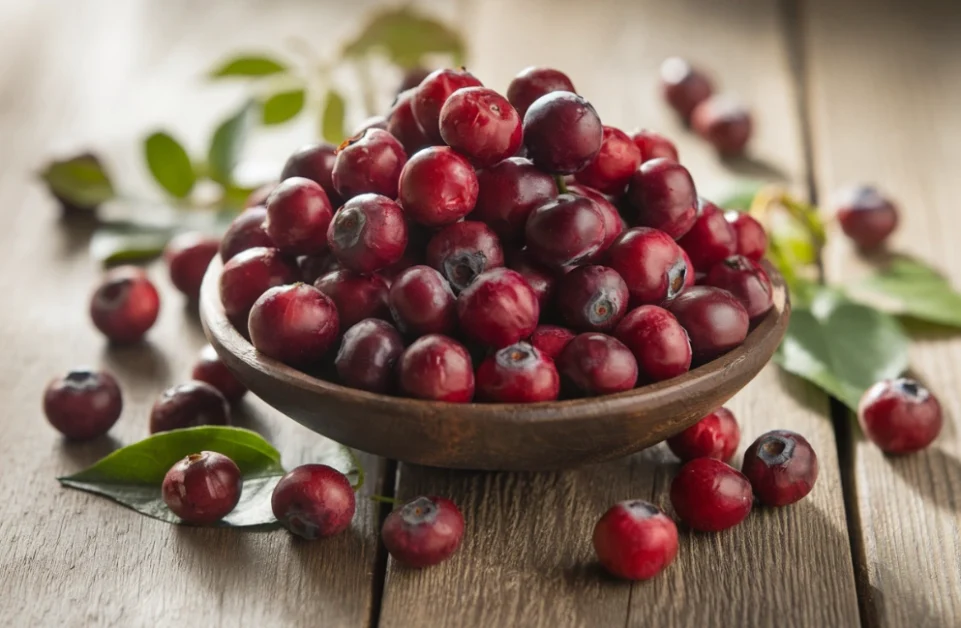
What does Goumi taste like? This question often arises among those curious about this lesser-known berry. Goumi berries are intriguing fruits that offer a flavor experience like no other. In this article, we’ll dive deep into the taste of Goumi berries, comparing them to other fruits, and exploring how they can be used in the kitchen.
Introduction to Goumi Berries
Goumi berries are small, scarlet-red fruits known for their distinctive taste and versatility in culinary uses. These berries are native to regions in East Asia, including Russia, China, and Japan, where they have been enjoyed for centuries. In recent years, Goumi berries have gained popularity in other parts of the world, especially among gardeners and food enthusiasts.
But what does Goumi taste like? Goumi berries have a flavor that is both tart and sweet, making them stand out from other more familiar berries. Their taste is often described as a mix between sour cherries and cranberries, with a hint of astringency that adds complexity. If you’re curious about how Goumi berries compare to other fruits, you can learn more from this Goumi berries flavor comparison.
What Does Goumi Taste Like?
The taste of Goumi berries can be described as a balance of tartness and sweetness. When you bite into a ripe Goumi berry, the first thing you’ll notice is its juicy texture. The berry’s flesh is soft and slightly chewy, with a burst of tart flavor that quickly mellows into a subtle sweetness. Some people compare the taste to that of sour cherries or even autumn olives, but Goumi berries have their own unique flavor profile.
It’s important to note that the flavor of Goumi berries can vary depending on their ripeness. When not fully ripe, Goumi berries can taste quite astringent, leaving a dry feeling in the mouth. However, once fully ripe, the astringency diminishes, and the sweetness becomes more pronounced. This balance of tart and sweet makes Goumi berries a delightful addition to various recipes.
For those who want to explore more about Goumi berries, the Traditional Goumi Berry Pie recipe offers a perfect example of how these berries can be used in baking.
The Flavor Profile of Different Goumi Varieties
Goumi berries come in several varieties, each offering a slightly different taste. Among the most popular are Sweet Scarlet, Carmine, and Tillamook.
- Sweet Scarlet: Known for its bright red color and juicy flesh, this variety has a tart-sweet flavor that is reminiscent of pie cherries.
- Carmine: This variety is less astringent and has a sweeter taste, often compared to sweetened Hawaiian Punch.
- Tillamook: Similar to Carmine, Tillamook offers a milder tartness with a slightly richer flavor.
The taste of these varieties can also be influenced by the growing conditions, such as soil quality and climate. If you want to explore more about the differences between these varieties, check out this Goumi berries flavor comparison.
Using Goumi Berries in Cooking
Goumi berries are incredibly versatile in the kitchen. Their tart-sweet flavor makes them ideal for both sweet and savory dishes. Here are some common ways to use Goumi berries in your cooking:
- Jams and Jellies: The natural pectin in Goumi berries makes them perfect for making jams and jellies. Their tartness balances well with the sweetness of sugar, creating a spread that is both flavorful and unique.
- Pies and Tarts: Goumi berries can be used as a filling for pies and tarts, either on their own or mixed with other fruits like apples or raspberries.
- Fresh Eating: If you enjoy the taste of tart fruits, you can eat Goumi berries fresh. They are a great addition to salads or as a topping for yogurt and ice cream.
- Sauces and Chutneys: Goumi berries can be cooked down into a sauce or chutney to accompany meats like pork or chicken. Their tartness cuts through the richness of the meat, adding a refreshing contrast.
These are just a few ideas for incorporating Goumi berries into your meals. The possibilities are endless, and their unique flavor can enhance a wide range of dishes.
If you’re looking for another way to enjoy these berries, the Goumi Berry Hand Pies recipe offers a delicious twist on traditional hand pies.
Pairing Goumi Berries with Other Ingredients
Goumi berries pair well with a variety of ingredients, both sweet and savory. Their tart-sweet flavor complements many other foods, creating balanced and flavorful dishes. Here are some ideas:
- Honey: The sweetness of honey pairs beautifully with the tartness of Goumi berries, whether in a sauce or drizzled over fresh berries.
- Lemon: Lemon enhances the tartness of Goumi berries, making them even more refreshing in desserts or drinks.
- Other Berries: Mix Goumi berries with strawberries, raspberries, or blueberries to create a complex berry medley for pies, salads, or jams.
- Chocolate: The richness of chocolate contrasts with the tartness of Goumi berries, making for a decadent dessert pairing.
These pairings can be used in various recipes, from simple snacks to more elaborate desserts. Experimenting with these combinations will allow you to discover new and exciting ways to enjoy Goumi berries.
Storing and Preserving Goumi Berries

To maintain the flavor and freshness of Goumi berries, proper storage is essential. Here are some tips:
- Refrigeration: Fresh Goumi berries can be stored in the refrigerator for up to a week. Place them in a breathable container to prevent moisture buildup, which can cause them to spoil.
- Freezing: For longer storage, Goumi berries can be frozen. Spread the berries on a baking sheet in a single layer and freeze until solid. Then, transfer them to a freezer-safe bag or container.
- Drying: Drying Goumi berries is another option for preserving them. Once dried, they can be added to trail mixes, baked goods, or enjoyed as a snack on their own.
- Canning: Goumi berries can be canned as jams, jellies, or preserves, allowing you to enjoy their flavor year-round.
Each preservation method affects the texture and flavor of the berries differently, so it’s worth experimenting to see which method you prefer. For more detailed advice, check out these best practices for preserving Goumi berries.
Goumi Berries in Traditional and Modern Cuisine
Goumi berries have a long history of use in traditional dishes, especially in their native regions. In Japan, for example, Goumi berries are often used in pickles and as a garnish for savory dishes. In modern cuisine, chefs are beginning to experiment with Goumi berries in more innovative ways, incorporating them into everything from cocktails to gourmet desserts.
This blend of tradition and innovation makes Goumi berries a fascinating ingredient to explore. Whether you’re sticking to classic recipes or trying something new, Goumi berries offer a flavor that is sure to stand out.
For those interested in no-bake desserts, the No-Bake Goumi Berry Pie recipe offers a simple and refreshing way to enjoy these berries.
FAQs About Goumi Berries and Their Taste
What do Goumi berries taste like when they are not fully ripe?
- When not fully ripe, Goumi berries can be quite astringent, with a more pronounced tartness. It’s best to wait until they are fully ripe to enjoy their balanced flavor.
How do I know when Goumi berries are ripe enough to eat?
- Goumi berries are ripe when they are a deep, rich red color and slightly soft to the touch. They should come off the stem easily when gently tugged.
Can Goumi berries be eaten raw?
- Yes, Goumi berries can be eaten raw, especially if you enjoy tart fruits. They are also delicious when used fresh in salads, desserts, or as a snack.
What can I do if my Goumi berries taste too astringent?
- If your Goumi berries taste too astringent, try mixing them with sweeter fruits or adding sugar to balance the flavor. Cooking the berries can also help reduce their astringency.
Do different Goumi varieties have different tastes?
- Yes, different varieties of Goumi berries can have slightly different flavor profiles. Some may be sweeter, while others might have a stronger tartness.
Conclusion
Goumi berries offer a unique flavor that is both tart and sweet, making them a versatile ingredient in the kitchen. Whether you enjoy them fresh, in a recipe, or preserved, Goumi berries are sure to add a distinctive taste to your dishes. Now that you know what Goumi tastes like, it’s time to try these berries for yourself and discover the many ways they can enhance your culinary creations.